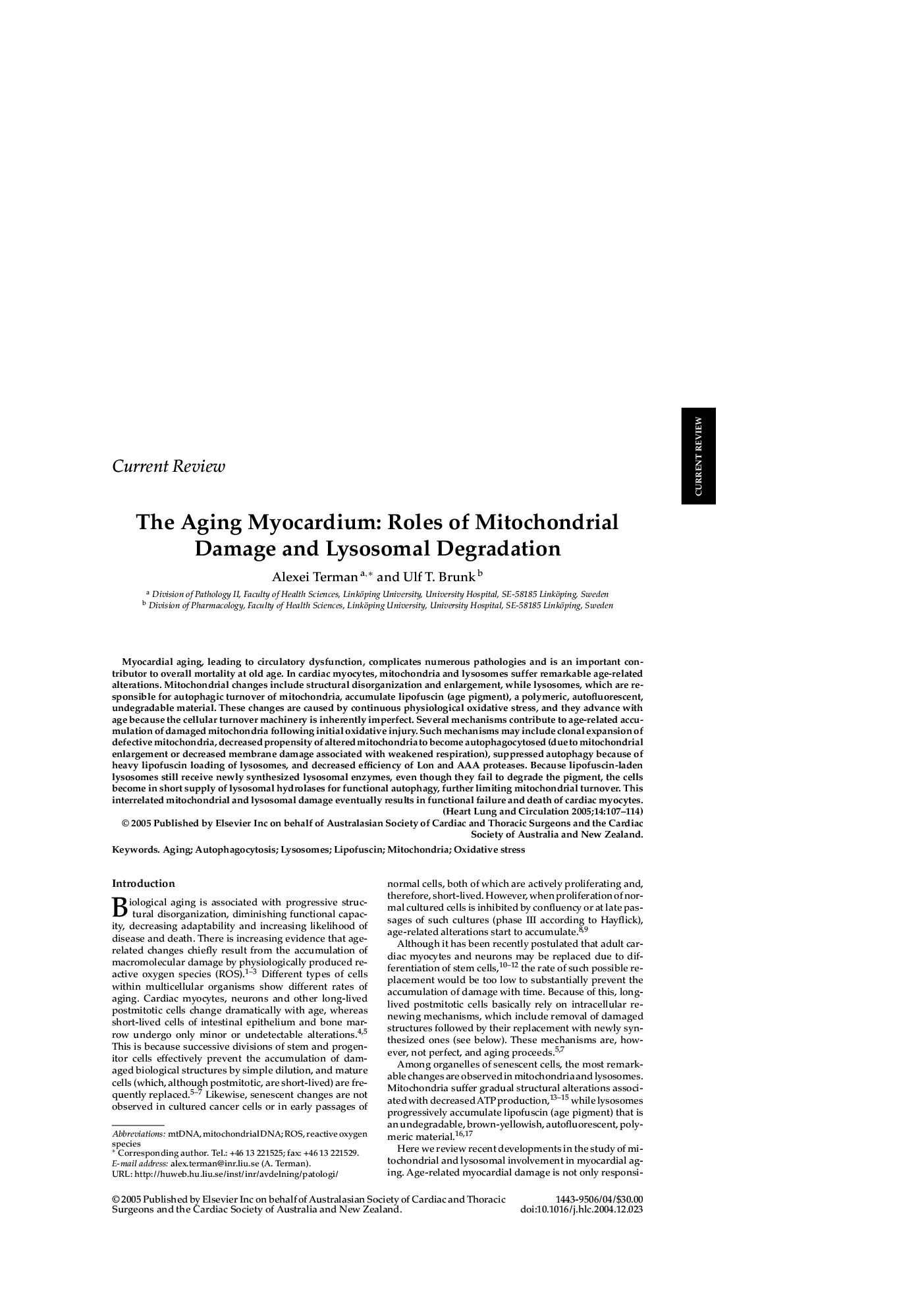| Article ID | Journal | Published Year | Pages | File Type |
|---|---|---|---|---|
| 9168313 | Heart, Lung and Circulation | 2005 | 8 Pages |
Abstract
Myocardial aging, leading to circulatory dysfunction, complicates numerous pathologies and is an important contributor to overall mortality at old age. In cardiac myocytes, mitochondria and lysosomes suffer remarkable age-related alterations. Mitochondrial changes include structural disorganization and enlargement, while lysosomes, which are responsible for autophagic turnover of mitochondria, accumulate lipofuscin (age pigment), a polymeric, autofluorescent, undegradable material. These changes are caused by continuous physiological oxidative stress, and they advance with age because the cellular turnover machinery is inherently imperfect. Several mechanisms contribute to age-related accumulation of damaged mitochondria following initial oxidative injury. Such mechanisms may include clonal expansion of defective mitochondria, decreased propensity of altered mitochondria to become autophagocytosed (due to mitochondrial enlargement or decreased membrane damage associated with weakened respiration), suppressed autophagy because of heavy lipofuscin loading of lysosomes, and decreased efficiency of Lon and AAA proteases. Because lipofuscin-laden lysosomes still receive newly synthesized lysosomal enzymes, even though they fail to degrade the pigment, the cells become in short supply of lysosomal hydrolases for functional autophagy, further limiting mitochondrial turnover. This interrelated mitochondrial and lysosomal damage eventually results in functional failure and death of cardiac myocytes.
Keywords
Related Topics
Health Sciences
Medicine and Dentistry
Cardiology and Cardiovascular Medicine
Authors
Alexei Terman, Ulf T. Brunk,
